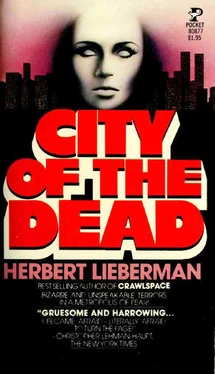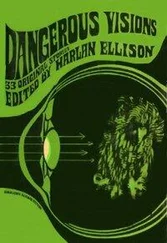Farther on, the lace and tapestried bedroom where his mother died eight years before in ghastly pain. The closets still hung with her clothes, redolent of old persons—camphor and mothballs, the vapory medicants of the sickroom.
Other rooms—guest rooms, sitting rooms. Gracious old baths, generous in size and opulently appointed—sunken tubs, fine old Italian brass fixtures. Certainly not the baths of a civil-servant physician with no visible private means of his own, but very definitely the baths of a young professional man who happened to marry quite well. Even now, the bitter rue of the have-not in a world of haves still rankles in him.
Then, at the far end of a corridor, a sewing room, large and cozy beneath steep-pitched gables, with a stone hearth and a loom. Ida’s hideaway. Balls of colored yarn still lie there in wicker baskets, a vase stocked like a quiver full of knitting needles, a beautiful old antique Singer; and on the loom itself, just as she left it, half completed, a white Bargello needlepoint rug studded with immense blood-red hydrangeas.
Then, finally, another room, smaller than all the others; a silken nook of a room—a small canopied bed, an elegant little vanity flounced with ruffles. Paintings of ballerinas line the flower-papered walls. An exquisitely feminine room, that of a child who had entered womanhood in that room. Once a nursery with a crib where an infant slept, an infant who’d arrived completely unexpected by her parents, long after they’d given up all hope of ever having a child of their own. Ida Konig had for many years appeared to be one of those stubborn and curiously begrudging cases of infertility. Responding to neither drug nor treatment, a mystery to a half-dozen specialists, all of whom were unable to determine the root of her problem. Then one morning, a few days past her fortieth birthday, she woke up and found strange stirrings inside herself. Nausea, flushes, menses long overdue. Even the gynecologist was unwilling to attribute the symptoms to pregnancy, preferring instead to call it some vague hormonal disorder. Then he saw the results of the rabbit test and the urine analysis, and a little later, during the course of an internal examination, felt a tiny fetus clinging to the wall of the uterus. And that night, Paul and Ida Konig lay in each other’s arms and laughed themselves to sleep.
Lolly Konig’s room was a clutter of pieces and oddments from every stage of her life from infancy to young womanhood. An old moth-eaten hobbyhorse, shelves lined and crowded with every imaginable kind of doll—Dutch dolls, china dolls, Raggedy Anns, cinnamon teddy bears with button eyes, Pinocchios and harlequins, a grenadier with pink cheeks and a shako, ballerinas and toreadors, little Hummel figurines out of Grimm and Andersen. And beneath the shelves of dolls, the shelves of books— Madeline, Babar, Winnie the Pooh, Alice in Wonderland, Peter Rabbit, The Wind in the Willows, The Secret Garden, Guki the Moon Boy. Then the somewhat older books— Heidi, Lorna Doone, Jane Eyre, Vanity Fair, Tess of the D’Urbervilles and on through Dickens and Twain. Then books about the planets, the life of fish and insects. Later, books on plant histology and art history. Then huge, opulent books crammed with paintings, cave paintings from Lascaux, medieval and Byzantine icon painting, Italian Quattrocento and Flemish painting, great French and Spanish masters, Impressionists and Russian moderns, and endless books of American painters—Eakins, Ryder, Sargent, Homer, Burchfield, Hopper, Remington, and Russell.
In the drawers and the closet, her clothing, piled and hung neatly, awaits her return—Shetland sweaters, tartan skirts, suits of wool and camel, jackets of suede, old patched and faded denim jeans from college days, shoe racks crammed with pumps and sandals, scuffed and beloved old oxfords, girlish saddle shoes and smart, young-ladyish patent leather. And, further on, in the darkest corner of the closet, a silk organza gown, redolent of orange blossoms from a graduation garden party two years prior.
“ Lolly, who is this man? Why did you bring him here? ”
Konig’s finger plays gently over the flaxen head of the Hummel goose girl. From her basket of wicker she strews feed to three plump geese who promenade about her feet.
“ Daddy, I’m sorry you don’t like Tom’s politics, but I can’t very well ask him to leave .”
Konig flicks out the light, then picks up the small goose-girl figurine and carries it over to the narrow bed. Sitting on the edge of the bed he kicks off his shoes, and still otherwise dressed in the sour, rumpled, death-drenched clothing of his day, he slumps backward into the thick, welcoming darkness, the small goose-girl figurine balanced comfortingly on his chest.
Only now that he is off his feet is he aware that the pain in his leg and back is excruciating. A few grams of Demerol will help, he thinks, but as of late he has been relying too heavily on Demerol, craving it always at night, just before sleep.
Instead of Demerol, he flings an arm across his face and lets the darkness wash over him. It is comforting to hold the little goose girl there on his chest in the dark—in his daughter’s bed, on the down mattress and bedding that still bears the imprint of her body, the memory of her weight. He feels somehow closer to her there in that familiar darkness where he has slept night after night for almost five months. He imagines her in some dingy, squalid place, a small, mean cell, a place of self-banishment. And he wonders if at that same moment she is thinking of him.
Suddenly the phone rings. Sitting bolt upright in bed, he hears it ring across the hall in his own bedroom. He sits there, eyes open and staring, nerves trembling with expectation, waiting for it to ring again. But it rings only once and then is silent. A mistake, he surmises, and yet his heart is thumping wildly as he hears the echo of that ring fading through the great, gloomy solitude of the house—a cry of anguish from somewhere far out in the clammy, terror-haunted night, like the bleating of a lost and stricken lamb.
The weekend has commenced now. Spreading out before him, the dreaded hours of idleness and inactivity; hours somehow to be gotten through in order to reach the blessed self-forgetfulness of back-to-work on Monday morning.
“Forty-eight separate pieces in all.”
“Good—now maybe you can tell me how many separate bodies those forty-eight pieces represent?”
Monday, April 15. 9:00 a.m. Autopsy Room, Chief Medical Examiner’s Office.
Young Tom McCloskey gazes forlornly down at five large trays of assorted upper limbs, trunk sections, extremities, fragments of bone and muscle, anatomical debris. “Sorry, sir—I’m afraid I don’t have the slightest idea how many bodies we’ve got here.”
Konig’s eyes swivel around at the half dozen or so of the others gathered about the grisly trays—Pearsall, Bonertz, Delaney, the little Parsi, Hakim, and shifty-eyed Strang.
“Well, then,” Konig goes on a little spitefully, “if you can’t tell me how many bodies you’ve got here, maybe you can give me some idea of the age, sex, and approximate stature of whatever the hell it is you’ve got here.”
Konig’s eyes, still fastened on McCloskey, glint maliciously. For a moment it appears he’s on the verge of laughter. Then suddenly his shoulders slump a bit, as if after great effort, and he sighs. “Well—this is one hell of a goddamned mess, isn’t it? We don’t even know if we have one body complete. And no heads.”
“Flynn rang up early this morning,” says Strang. “Said they’d been digging all weekend. Found some more soft parts and sent them over to us yesterday. Thinks he might have more of this stuff for us today.”
Читать дальше












